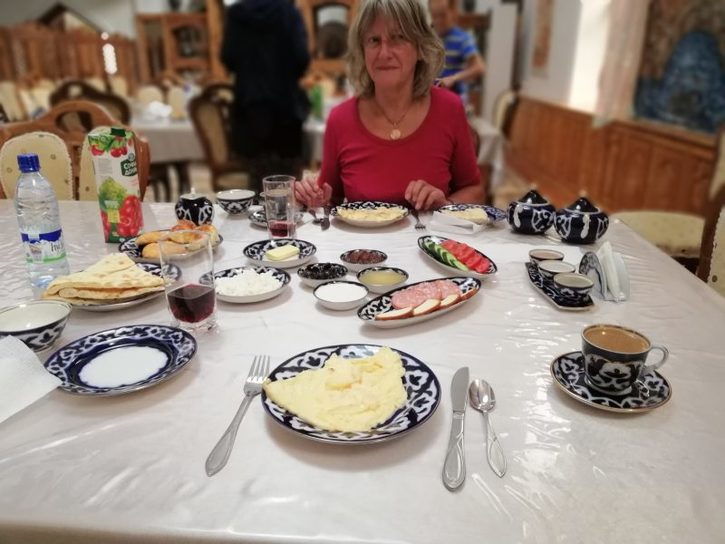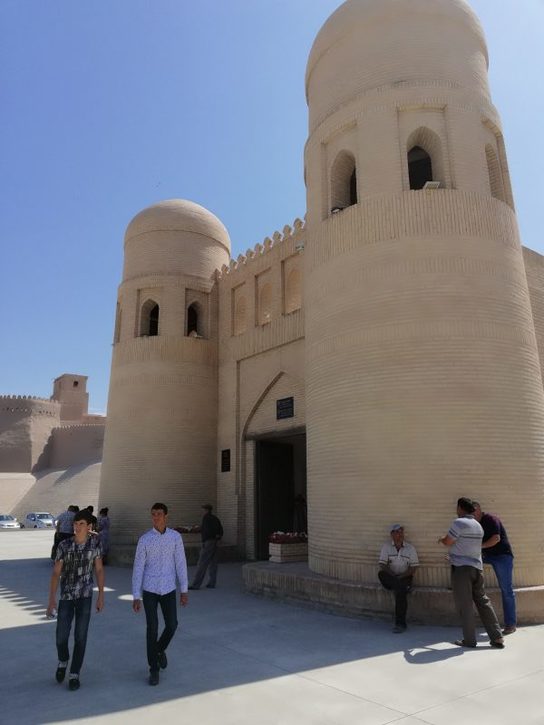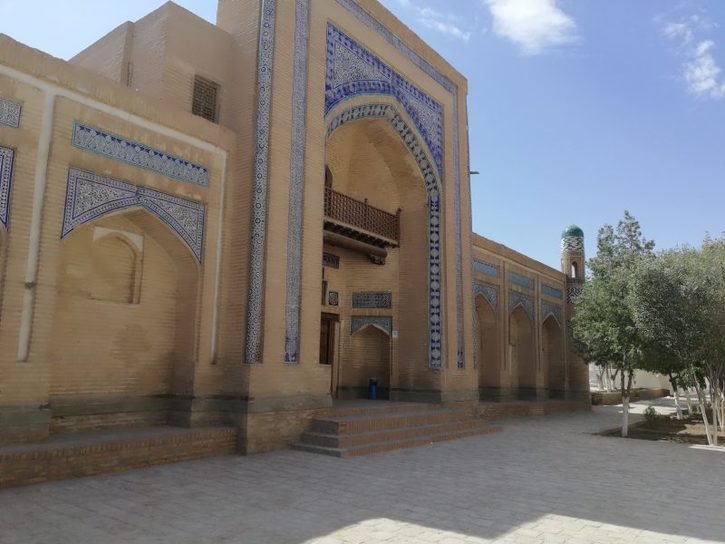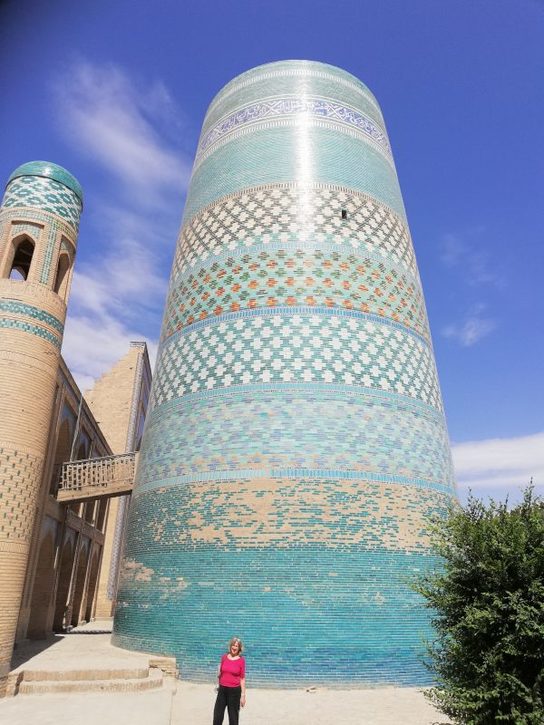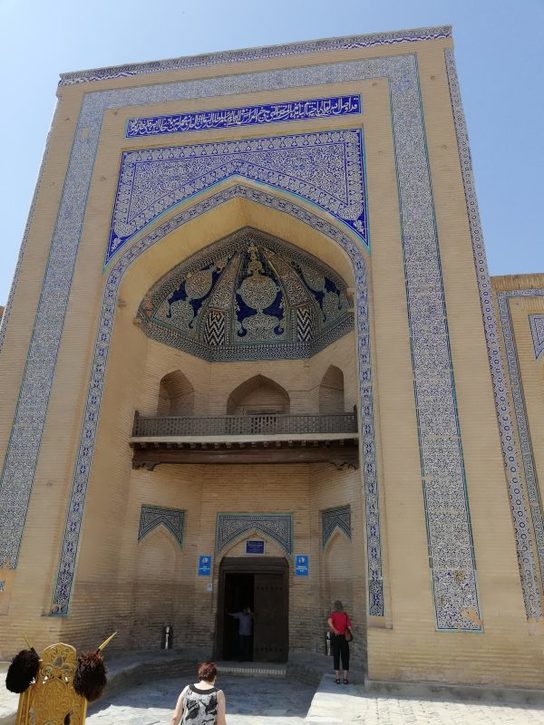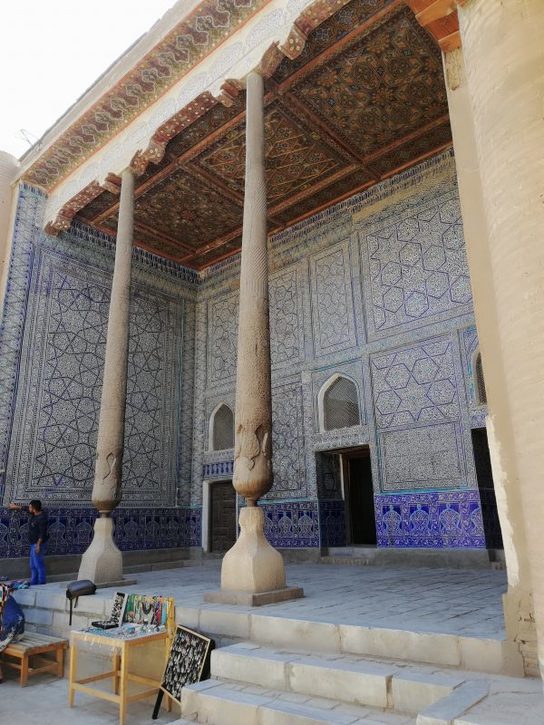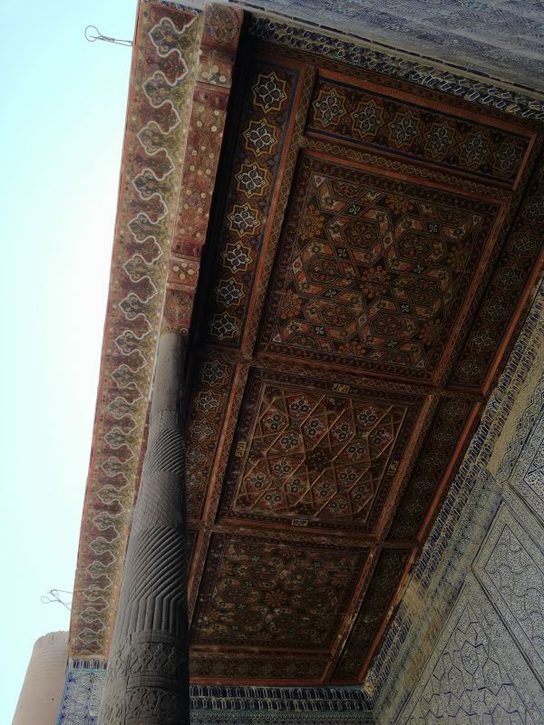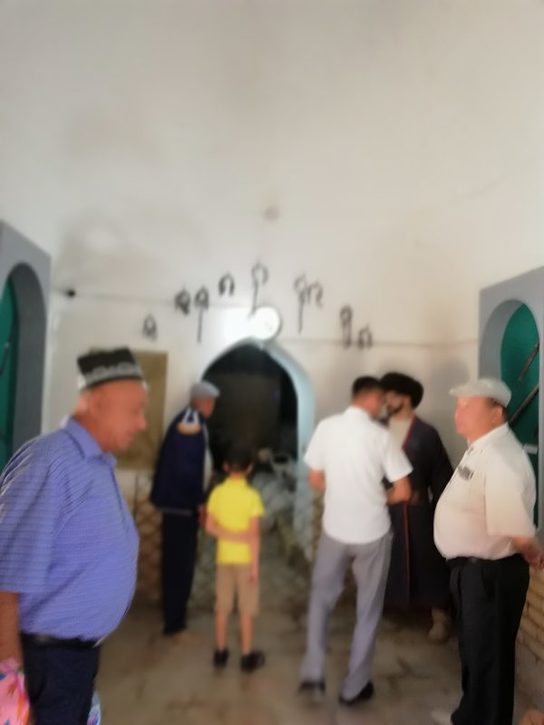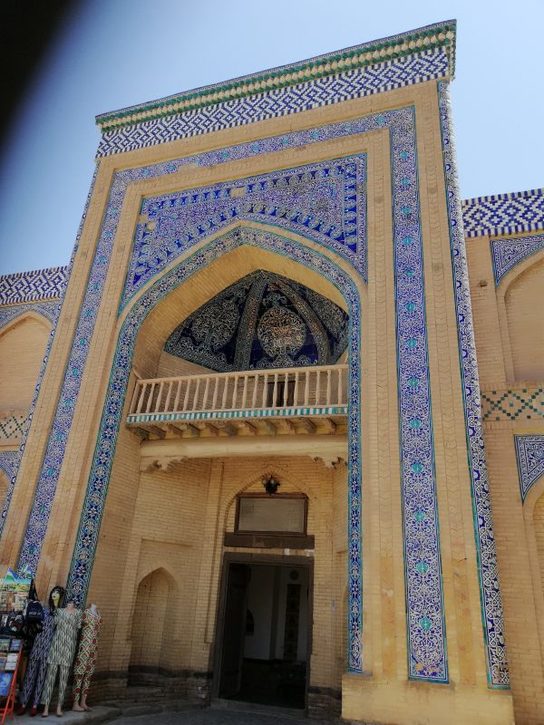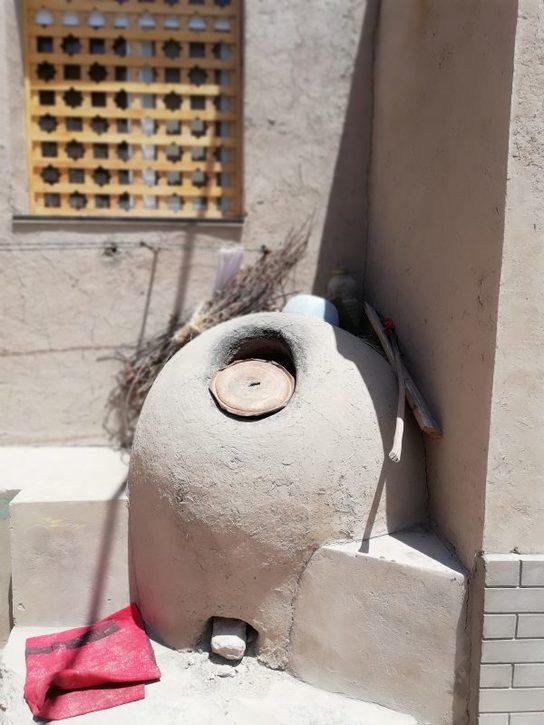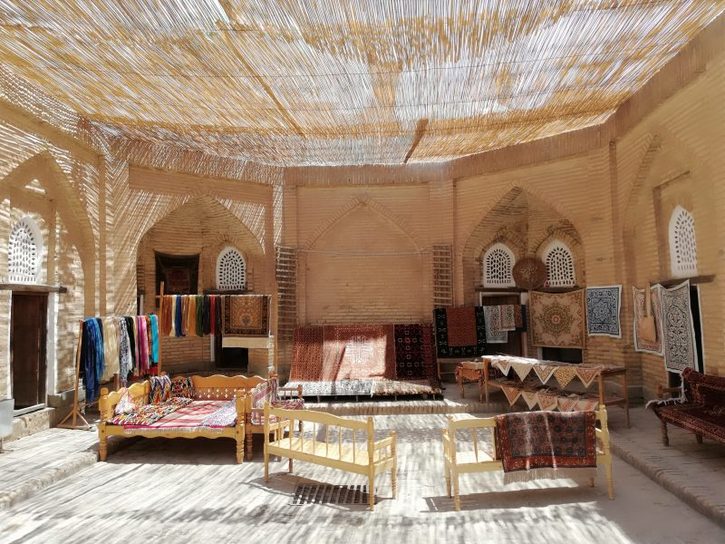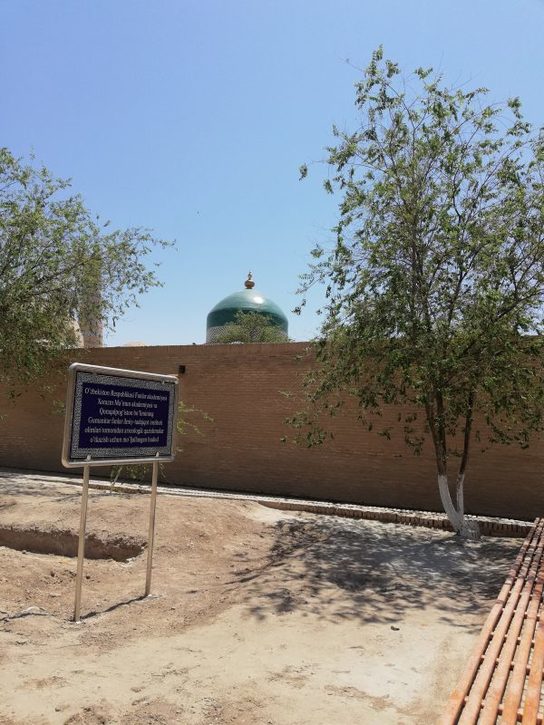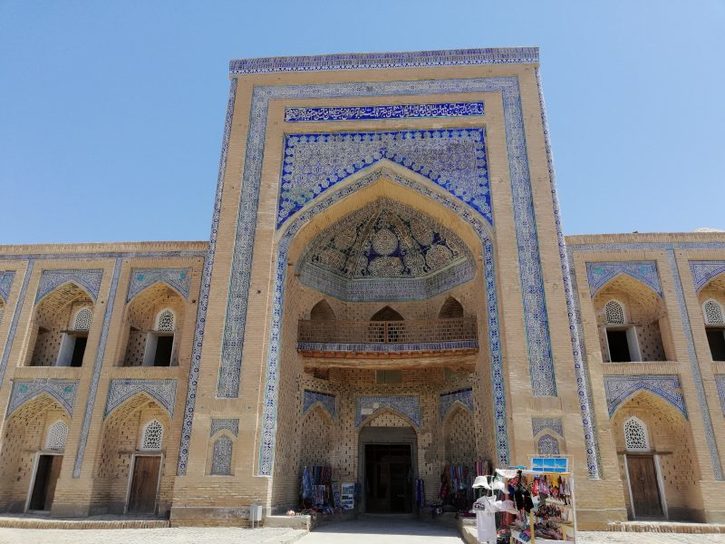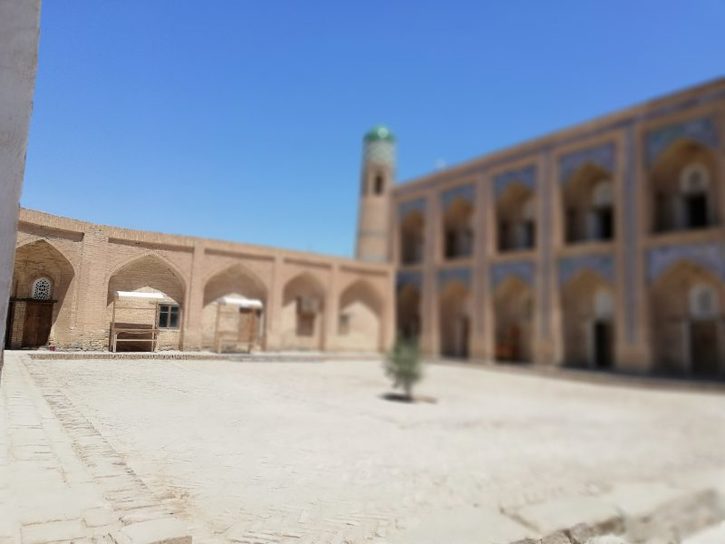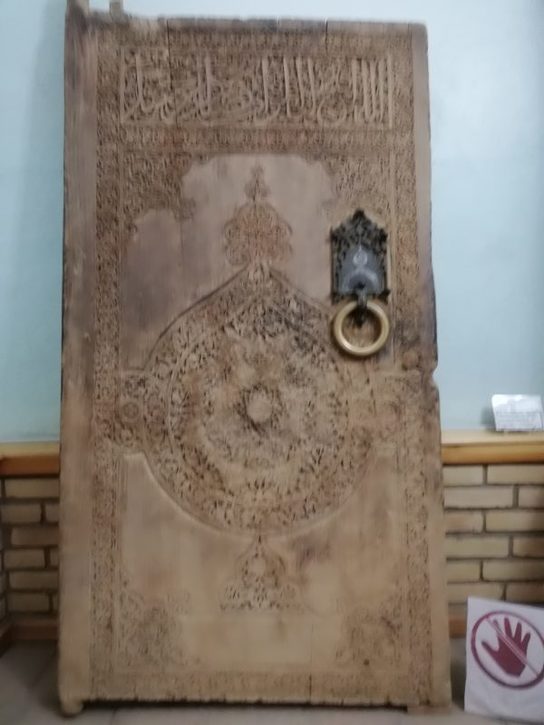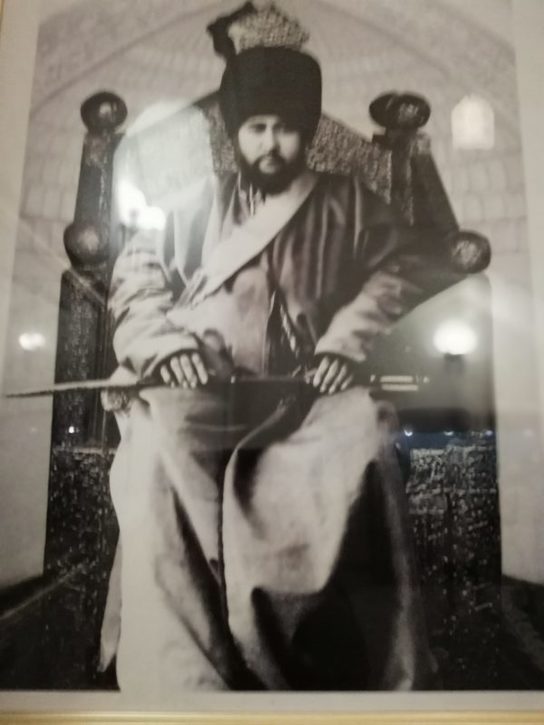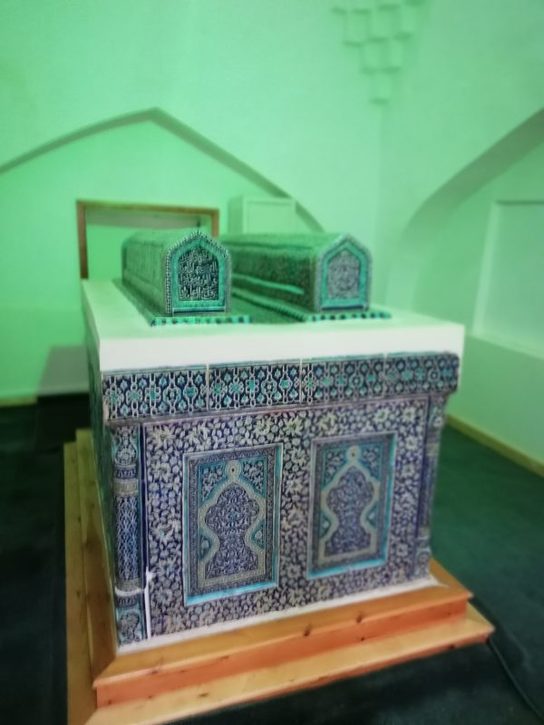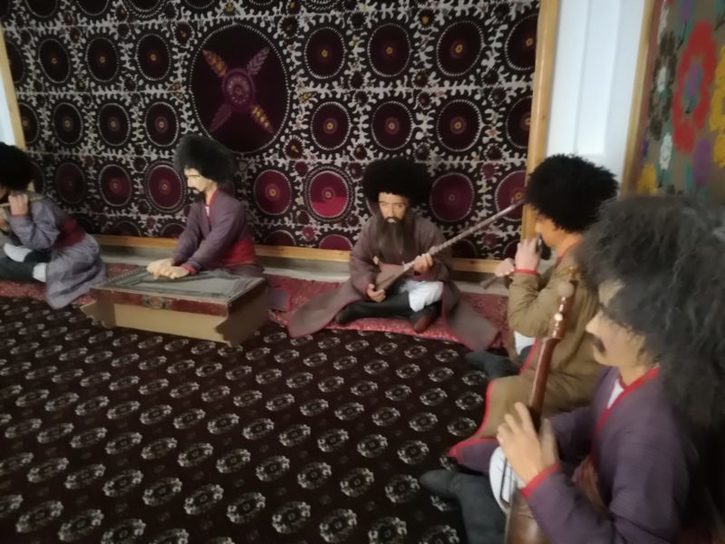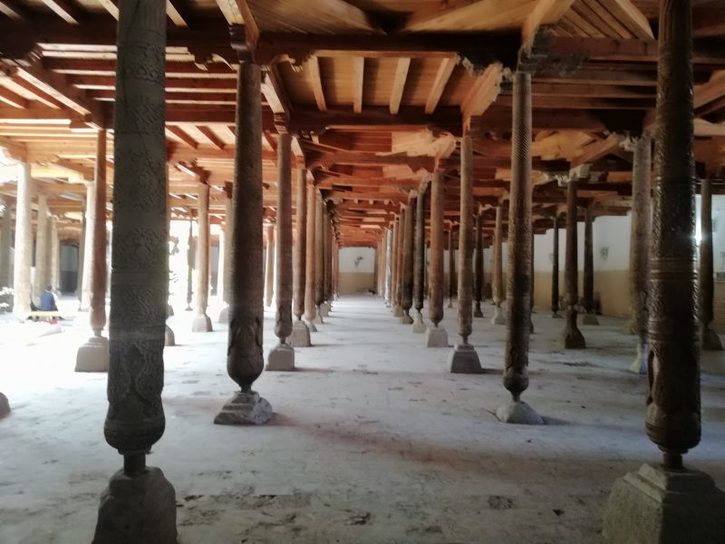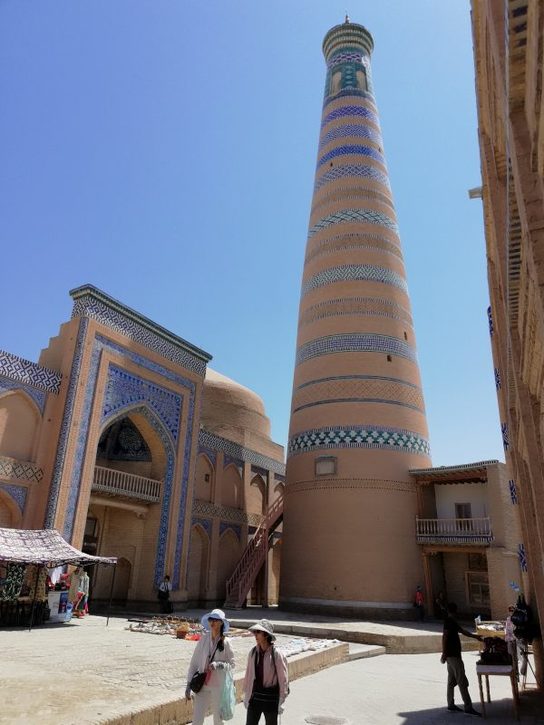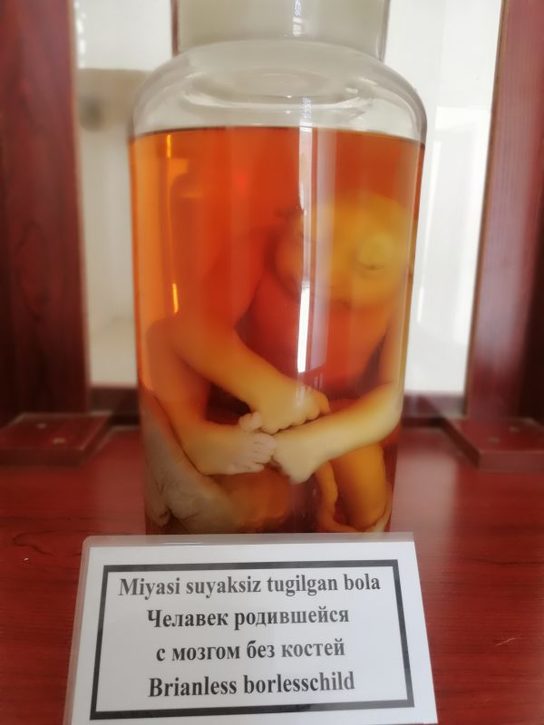The Lonely Planet book says that Khiva’s name is redolent of slave caravans, barbaric cruelty, terrible desert journeys and steppes infested with wild tribesmen. It was founded when Shem, a son of Noah, discovered a well which he called Kheivak. It became a Silk Road town in the 8th century, but remained less important than Konye-Urgench, now in neighbouring Turkmenistan. After the Timurids destroyed Konye-Urgench in 1388, Khiva gained in importance, especially after a branch of the Uzbek Shaymanids founded a state in the Khorezm delta of the Amu Darya river where it ran into the Aral Sea, and made Khiva their capital in 1592. There was a slave trade until it was abolished after the Bolshevik revolution, when slaves captured by Turkmen tribesmen from the Karakum Desert or by Kazakhs from the steppes were sold.
The ruler of Khiva, Shergazi Khan, offered to submit to the rule of Peter the Great in 1717 and a Russian army of 4,000 lead by Prince Aleksandr Bekovich arrived to negotiate the deal. However the Khan changed his mind and slaughtered all the Russians, sending Bekovich’s head to his rival, the Emir of Bukhara, and put the rest of him on display.
Nadir Shah of Persia smashed up Khiva in 1740 before it was rebuilt and the slave trade continued unabated, with blonde-haired Russian girls now appearing for sale. The Russians arrived in force in 1873 under General Konstantin Kaufman and Khiva became a vassal of the Tsar. The Russians then massacred the local Yomud tribesmen and sent the Khan’s silver throne to Russia.
The khanate continued to 1920 when the Bolshevik General Mikhail Frunze created the Khorezm People’s republic, and it was absorbed into the Uzbekistan republic of the USSR in 1924.
We passed through the West Gate and explored the Kohna Ark, the fortress and residence of the Khiva khans. It was built in the 12th century by Ok Shihbobo and expanded in the 17th century. The khan’s harem, mosque, mint, stables, arsenal, barracks and jail were all here. The khan presided over the trial of his subjects in a room in the Summer Mosque opening out into the courtyard with three doors. If the prisoner was found not guilty, the khan left through the left-hand door, and if guilty through the right-hand door. The condemned man was granted one last wish, which was generally to be beheaded in a huge execution square in the centre of the city. The alternative was to be tied up and thrown off a minaret, usually taking days to die. There is a small museum housed in the mint inside the Ark, with intersting exhibits including money printed on silk.
The Zindon was the khan’s jail and has a collection of manacles and whips. The Kalta Minor minaret was started in 1851 by a khan who wanted it to be built so tall that he could see as fas as Bukhara (284 miles away) but he dropped dead in 1855 and it was never finished.
The Sayid Alauddin Mausoleum dates back to 1310 when Khiva was ruled by the Mongol Golden Horde. The Juma Mosque has 218 richly-carved wooden pillars holding up the roof, seven of which are original, dating from the 10th century mosque. The rest are 17th century.
The natural history museum has an amazing display of stuffed birds, snakes and fish, and dried plants and insects. An interesting exhibit is a preserved baby human which was born without a skull.
